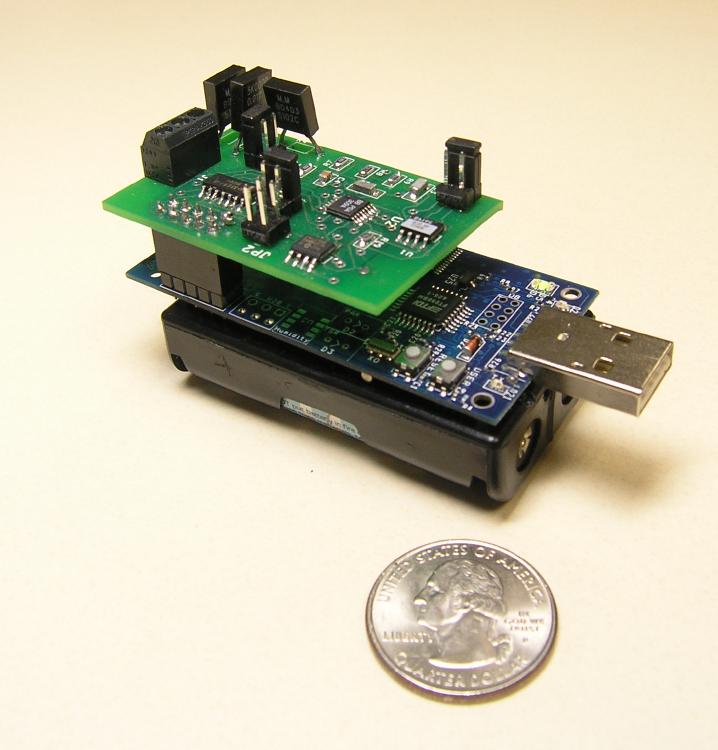
| Sponsor: | NSF and CACC |
| Period: | August 2003 - July 2005 |
| Students: | Suyoung Yoon (adviser Mihail L. Sichitiu) |
| Harshvardhan P. Joshi (graduated, adviser Mihail Sichitiu) | |
| Sharat Visweswara (graduated, adviser Rudra Dutta) | |
| Manjunath Prabhu (adviser Mihail L. Sichitiu) | |
| Apurva Goel (graduated, adviser Rudra Dutta) | |
| Bogdan Burlacu (graduated, adviser Sami Rizkalla) |
This project is the half of an CACC of an NSF tie project (i.e., a project that ties two NSF centers). The other involved NSF center is the Center for Repair of Buildings and Bridges with Composites (RB2C). The faculty involved are Dr. Sami H. Rizkalla (from RB2C) and Dennis Kekas, Rudra Dutta and Mihail Sichitiu from CACC.
The goal of this project is to increase the lifetime of a battery-powered sensor network using a combination of scheduling and power aware routing for continuous monitoring sensor networks. The motivating application is structural health monitoring of building and bridges (the RB2C half).
The first task of this project was the development of a deterministic schedule-based energy conservation scheme suitable for sensor networks with periodic measurements (like the ones considered in this project)[1]. In the proposed approach, time-synchronized sensors form on-off schedules that enable the sensors to be awake only when necessary. The schedule establishment is fully distributed and thus appropriate for large sensor networks.
The deterministic schedule was further generalized to less-than-periodic networks, i.e., to networks where the readings are only approximately periodic (with a given probability distribution function) [2-4].
In most wireless sensor networks, due to the limited transmission range, data sensed by each sensor has to be forwarded in a multi-hop fashion before being delivered to a base station. The sensors closer to the base station have to forward comparatively more messages than sensors at the periphery of the network. Assuming that this increased activity of the sensors near the base station translates into a higher power consumption and each node has the same initial battery power, the nodes closer to the base station will deplete their batteries earlier. To alleviate this undesired effect, we investigate the effect of multiple battery levels to maximize the useful lifetime of the network. We demonstrate a powerful, yet attractively simple scheme to redistribute the total energy budget in multiple (but few) battery levels. We show by theoretical analysis, as well as simulation, that this substantially improves the network lifetime [5].
We further study the effect of power efficient routing algorithms on the lifetime of multihop wireless sensor networks (WSNs). The WSNs considered are special cases of mobile ad hoc networks (MANETs); in particular, we assume that all data and control traffic in the WSN is flowing between the sensor nodes and the base station. This assumption results in a considerably simpler problem and solution than for the more general MANETs. We calculate analytically lifetime bounds of the WSN under specific routing algorithms. A surprising results is that, for WSNs, the choice of the routing algorithm has almost no consequence to the lifetime of the network [6].
The final and highly relevant step for this project is the
practical implementation of a signal pre-conditioning circuit
featuring a programmable amplifier capable of variable range and
resolution as well as temperature and non-linearity compensation [8].

Resources
[1] Mihail L. Sichitiu, "Cross-Layer Scheduling for Power Efficiency in Wireless Sensor Networks," in Proceedings of INFOCOM 2004, (Hong Kong, PRC), March 2004.
[2] Apurva A Goel, Power Conservation in Wireless Sensor
Networks Using Switch-off,
, MS Thesis, Dept. of Computer Science,
NC State University, December 2003.
[3] Sharat C. Visweswara, An Automatic, Adaptive, Ad-hoc
Algorithm for Power Conservation in Sensor Networks using
Switch-off
, MS Thesis, Dept. of Computer Science, NC State
University, July 2004.
[4] Sharat C. Visweswara, Apurva A. Goel, Rudra Dutta , An
Adaptive Ad-hoc Self-Organizing Scheduling Method for Quasi-Periodic
Sensor Traffic
, The First IEEE Communications Society
Conference on Sensor and Ad Hoc Communications and Networks (SECON
2004), Santa Clara, CA, Oct. 4-7, 2004.
[5] Mihail L. Sichitiu and Rudra Dutta, "On the Lifetime of Large Wireless Sensor Networks with Multiple Battery Levels," in Ad Hoc & Sensor Wireless Networks, 2006.
[6] Sharat Visweswara, Rudra Dutta, Mihail Sichitiu, "Adaptive Ad-hoc Self-Organizing Scheduling for Quasi-Periodic Sensor Network Lifetime," to appear in Elsevier Computer Communications Journal, 2006.
[7] Harshvardan P. Joshi, Bogdan Burlacu, Manjunath M. Prabhu, Suyoung Yoon, Mihail L. Sichitiu, Rudra Dutta, Sami H. Rizkalla, "Wireless Structural Health Monitoring System Design, Implementation and Validation" Center for Advanced Computing and Communications (CACC), Raleigh, NC, Tech. Rep. TR-06/01, January 2006.
[8] Suyoung Yoon and Mihail L. Sichitiu, "Analysis and Performance Evaluation of a Time Synchronization Protocol for Wireless Sensor Networks," in Proc. of The International Conference on Telecommunication Systems, Modeling and Analysis(ICTSM 2005), Dallas, TX, Nov. 2005.
[9] Suyoung Yoon, Rudra Dutta and Mihail L. Sichitiu,
Power aware routing algorithms for wireless sensor
networks
in
Proc. of The Third International Conference on Wireless and
Mobile Communications (ICWMC 2007), (Guadeloupe, French
Caribbean), Mar. 2007.
[10] Suyoung Yoon, Chanchai Veerarittiphan, and Mihail L. Sichitiu,
Tiny-Sync: Tight Time Synchronization for Wireless Sensor
Networks
, to appear in ACM Transactions on Wireless Sensor
Networks, 2007.
[11] Suyoung Yoon, Power Management in Wireless Sensor
Networks
, Ph.D. Thesis, Dept. of Electrical and Computer
Engineering, NC State University, Feb. 2007.